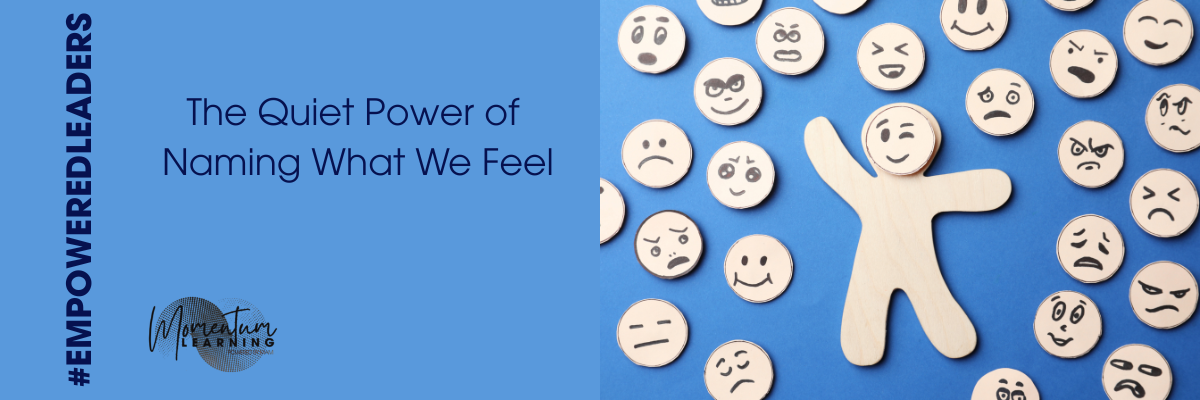The Quiet Power of Naming What We Feel
The Quiet Power of Naming What We Feel
Think about the last time a conversation took an unexpected turn. Perhaps someone challenged your idea, or a colleague’s comment landed more sharply than intended. In that instant, your body knew before your mind caught up; heart rate quickening, thoughts racing, a reply already forming (usually your most “brilliant” one of the day).
Moments like these reveal the hidden force of emotion. Left unnamed, it often takes the lead. Frustration colours our tone. Anxiety pushes us to overexplain. Hurt folds us into silence. What happens next in the conversation is shaped not by intention, but by reaction.
Yet something shifts when we notice and name what we are feeling. Neuroscience tells us that labelling emotions dials down the brain’s alarm system, easing intensity and creating space to think more clearly. A pause is introduced. And in that pause, we regain choice.
The choice may be as simple as steadying your breath before responding. It may be quietly acknowledging, “I feel defensive,” and deciding to ask a clarifying question instead of firing back. These are not grand gestures; they are small acts of emotional editing that change the course of a moment (and possibly save you from an awkward apology later).
Perhaps the real opportunity is not in erasing emotion from our interactions, but in recognising it sooner and holding it with more honesty. Imagine the difference in our workplaces, homes, and communities if conversations could shift from clash to curiosity simply because we were willing to pause, name, and choose.
And if you would like to go deeper in understanding your emotions, there is a great episode of the Feel Better podcast (Ep 75: How to Know What You are Feeling) that explores why we often default to “fine” or “busy.” It is a refreshing reminder that emotional literacy starts with honesty, and that “fine” is often just code for “running on fumes.” Listen here.
Reflective Questions to Consider
What patterns do I notice in the way I respond when certain emotions show up, and how might those patterns be shaping my relationships?
How could creating a pause before responding open the door to deeper understanding rather than quick resolution?
Do I have the vocabulary to accurately identify and name my emotions, or is this something I need to build; beyond “fine,” “tired,” and “running on caffeine”?
Go gently this week
Mary-Anne

